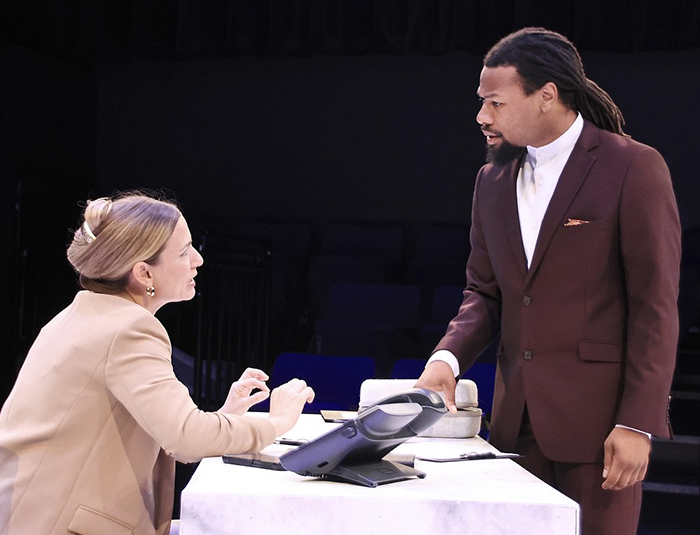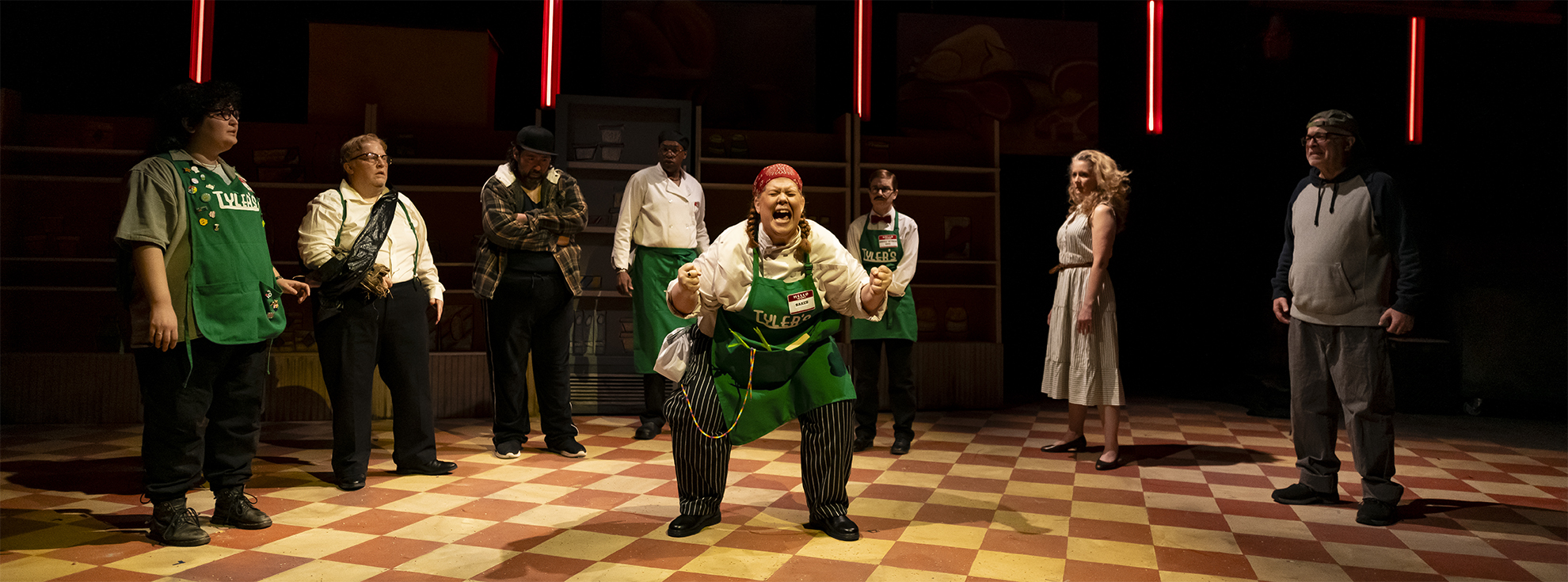Everyone loves a good first, from races to teams to a step on the moon, but when it comes to theater, being the first to offer a brand new work is not without risks. World premiere productions can be especially precarious show business for regional companies in terms of financial and reputation costs. Yet, all over Texas, from the smallest theaters to city institutions, companies still offer up the occasional world premiere. So what’s the reward? I posed this question to several artistic directors who recently nurtured and produced new works. What I found is that beyond the claim of a first lies a fundamental artistic urge to create.
On the other side of the spectrum are the big theater institutions like the Alley Theatre in Houston and Dallas Theater Center, which have a history of offering world premieres in the midst of their eclectic seasons of classics and contemporary plays. DTC produced their interim AD Jonathan Norton’s I am Delivered’T just last season and will debut his Malcolm X and Redd Foxx Washing Dishes at Jimmy’s Chicken Shack in Harlem in 2026. Meanwhile, the Alley’s artistic director, Rob Melrose, has made it a practice to include at least two world premieres every season.
Scanning the Texas theater landscape, we find many small, mid-sized and specialty theater companies who mount new work from once a season to once a decade. Some of the risks of producing a world premiere are rather obvious in these trying artistic times when public funding can be short and theaters are still attempting to get audiences back into live performances.
Several of the ADs also mentioned the added costs if the play or musical is commissioned and raised issues of marketing a world premiere to audiences who don’t want to risk their evening and ticket price on an unknown. For companies that rely on their season subscribers, the questions become even more complicated.
“Because regional theater audiences are shifting away from being subscribers to single ticket buyers, the information around the individual show has to have a strong enough appeal to draw audiences to it,” explains Houston’s Stages artistic director Derek Charles Livingston, who spent several years as director of new play development at Utah Shakespeare Festival. “Subscribers, by their commitment to a whole season, were, in essence, telling the theater institutions that we audience members trust you to curate new works that align with the canonical work that you produce. But for the regional theatre with a mix of new and previously produced work, the new play has a higher hurdle in lacking the known to which post-pandemic audiences gravitate: title, history, reputation.”
Livingston has obviously thought about this risk/reward balance as he’s picked the world premiere play Let. Her. Rip. as the first work he’s programming as Stages artistic director and the first show he’ll direct there.

1 ⁄6
Dylan Godwin as Will in Alley Theatre’s production of Liz Duffy Adams’s Born with Teeth. Photo by Lynn Lane

2 ⁄6
Seth Carter Ramsey, Callina Anderson, Christianne Mays and Saroa-Dwayne Sasa in the Main Street Theater Production of Seven Assassins. Photo by Pin Lim / Forest Photography.

3 ⁄6
Julia Krohn and Dillon DeWitt in the Main Street Theater Production of Memoriam. Photo by Pin Lim / Forest Photography.

4 ⁄6
Yesenia García Herrington and Vivian Noble in the Austin Playhouse production of She Was Here. Photo by Steve Rogers Photography.

5 ⁄6
Playwright Parker Davis Gray of Second Thought Theatre. Photo courtesy of Second Thought Theatre.

6 ⁄6
The cast of the Catastrophic Theatre’s production of Lisa D’Amour’s Frozen Section. Photo by Anthony Rathbun.
“We thought: What if we did an entire season of world premieres? When risking, why not risk all the way? Second Thought and our audiences are also primed for this sort of programming. We already produce plays that aren’t ‘commercial’ and so take a risk when producing any show,” explains executive director Parker Davis.
Similarly, Houston’s Catastrophic Theatre has built an audience that has come to expect avant garde productions along with an annual world premiere summer show, so they likely weren’t too shocked when Catastrophic built its current season almost entirely of new work.
“New work is part of Catastrophic’s DNA and mission,” says co-founder Tamarie Cooper, while in rehearsals for the world premiere of Lisa D’Amour’s Frozen Section. “We are very fortunate: we can produce ‘risky’ theatre without being stunted by dependency on season ticket revenues, or pressure from stakeholders to produce the most popular well-known plays.”
But even if a company’s audience is primed for world premieres, there’s also the question of time, as a new piece might need a longer development and rehearsal period.
Lara Toner Haddock, producing artistic director at Austin Playhouse, which most recently world premiered Raul Garza’s She Was Here describes a similar process, even when a play has already been workshopped.
“There’s a freedom that isn’t present with published plays. Scenes get rearranged, character relationships are clarified, and the goal is to discover what the play really wants to be, it’s best form.”
So with all the time, money and audience hesitancy factors, why take a chance on the brand new? Yes there is that first place pride, and perhaps that one in a billion producing shot that a company could have the next Hamilton on their hands like New York’s Public Theater. But for most companies the rewards are much more fundamental.
Livingston says that the ultimate reward is that audiences embrace a new work; other theaters want to produce it, “And then—heaven!—maybe it’s published with the glorious words: Originally produced by [fill in the name of YOUR theater]. Then that theater of origin has been part of putting a new play into the theater universe.”
Some artistic directors even treat giving a new voice and story a stage as their duty to Texas theaters and audiences.
“New plays are essential to a healthy cultural ecosystem,” says Haddock. “They invite artists and audiences to embrace our particular cultural moment, clarify it for themselves, and help interpret it for the next generation.”
While none of these artistic directors ever used the exact word, from their descriptions I realized that they found joy in the act of bringing a new work to the stage.
“Regardless of the outcome, my favorite reward is in the creation process which is always an amalgam of the playwright and director’s vision and the input of the creative team and audience,” says Scheps.
Cooper believes the collaboration process for a world premiere ties the company together. “By creating new work with our ensemble of artists, we are strengthening the shared languages and experiences, creating a short-hand, which is very helpful and can actually expedite the process,” says Cooper.
“I believe that world premieres find every artist involved in the project at their most creative,” echoes Davis. “Designers are dreaming up designs straight out of their heads since there isn’t a previous production to compare it to. Directors are getting to make big swings. Actors are getting to originate roles – sometimes roles that have been written for them or with them in mind. So to have an entire room that is collaboratively in pure creation is so exciting. ”
There can be danger in that first leap into some unknown theatrical world where no cast and artistic crew has ever ventured before, but during the exploration lies the possibility of creative wonder.
—TARRA GAINES





